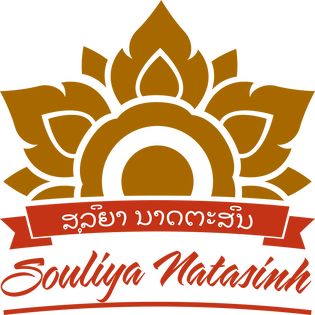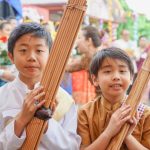Culture

Souliya Natasinh is the name of the current cultural program of the Laotian American Society. The cultural program overall was founded by the original members of LAS back in 2003 and had adopted the current Souliya Natasinh program in 2019. The name “Souliya” translates to “sunrise” which symbolizes LAS’ newer and more modern approach in leadership training and spreading cultural awareness as we start working with a newer generation of Laotian Americans. “Natasinh” is homage to the original traditional performance arts school which was founded in Laos. The Souliya Natasinh program is aimed towards all ages and focuses on creating a new generation of Laotian American leaders while learning and embracing the arts of Laotian culture. Our young dancers uphold a shared heritage while gaining confidence and through encouragement of personal growth, leadership, and networking.
Souliya Pathom






Souliya Pathom is the beginner program within the Cultural Department and has members between Pre-K thru elementary school. “Pathom” can be translated as “elementary leveled” and is an introductory level of Laotian traditional/folk dances and techniques to students. Pathom members has opportunities to showcase the routines at various local events throughout the year, all while having fun learning about the Laotian culture in the process.
Souliya Madthanyom
Souliya Madthanyhom is the intermediate program within the Cultural Department and has members between middle, high school and even some college. “Madthanyhom” can be translated as “intermediate leveled” and is aimed towards members who has been previously exposed to our Souliya Natasinh program and continuing to enhance their knowledge in Laotian traditional/folk dances and hone their skills as Natasinh performers. Madthanyhom members has opportunities throughout the year to perform all over the state at various events, ranging from local festivals to charity galas and others.
